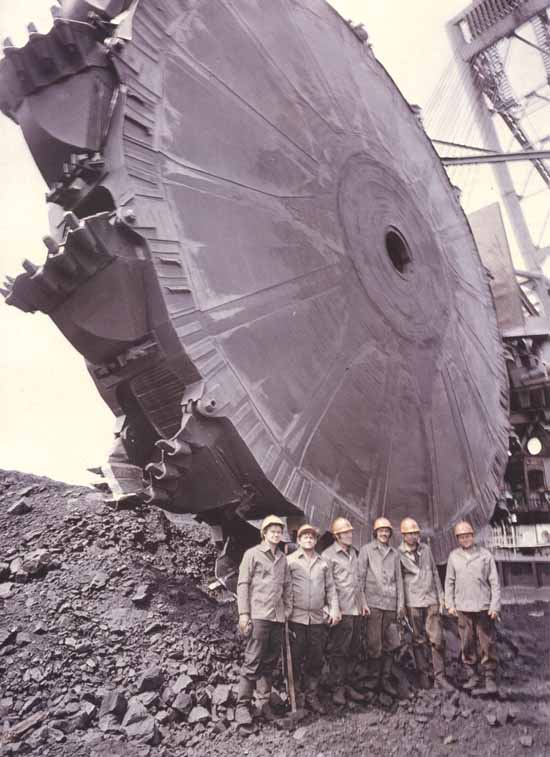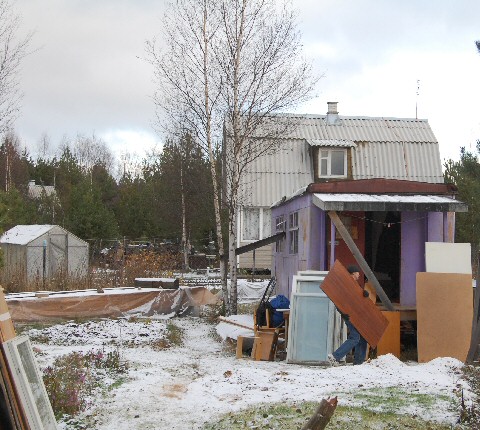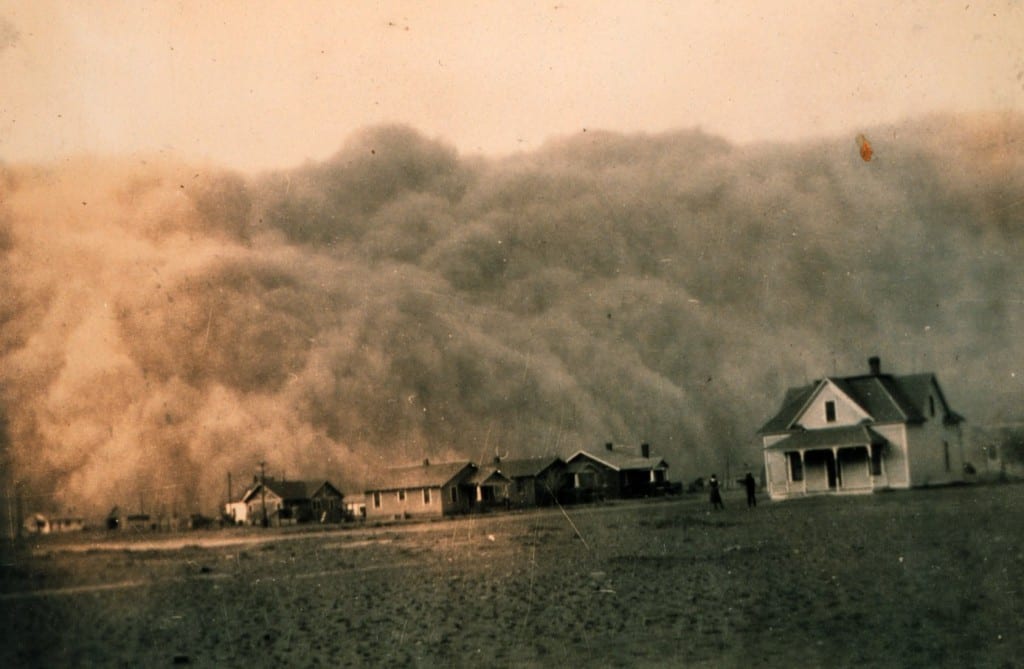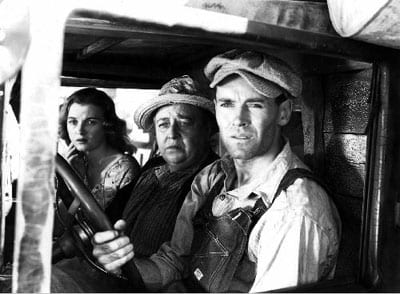{OpEds} Super-etatism and Socialism: Towards a Statement of the Problem
Alexander Tarasov
The lessons of the Soviet Union are of universal value as humanity struggles to transcend capitalism. Here we present some visions and critiques from a leading Russian thinker

Western blockades and unremitting hostility forced the Soviet Union into a quest for self-sufficiency in all critical areas of production, from tanks, advanced aircraft and ships to construction equipment, pharmaceuticals and consumer goods. With all its flaws and inefficiencies due to a creeping bureaucratism, Stalin’s errors, counter-revolutionary action, and the profound dislocations of a brutal war and uneven agricultural output, the USSR was still able to outproduce Germany by the second year of the Great War, and later field many weapons systems—such as the T-34 tank—that easily surpassed in number and quality most of the Germans’ counterparts. WW2 demonstrated to many the superiority of even “proto” socialism and the resourcefulness of Slavonic peoples. Photo: Russian engineers and workers in front of heavy duty excavator.—Eds
NOTE: THE SELECTION OF PHOTOS AND CAPTIONS THAT ACCOMPANY THIS ARTICLE IS BY THE EDITORS
 For left-wingers throughout the world there are now two important problems: understanding the reasons for the failure of the Soviet experiment, and the renewal of socialist theory. In order to solve these problems it is necessary first to understand on a strictly scientific basis what the so called “real socialism” was in reality and to create a vision of a truly socialist (communist) society, of a socialist (communist) mode of production.
For left-wingers throughout the world there are now two important problems: understanding the reasons for the failure of the Soviet experiment, and the renewal of socialist theory. In order to solve these problems it is necessary first to understand on a strictly scientific basis what the so called “real socialism” was in reality and to create a vision of a truly socialist (communist) society, of a socialist (communist) mode of production.
The first problem is important not only because the left must learn the lessons of its own mistakes and cannot move forward without understanding its past, but also because in the post-Soviet space there are quite influential forces, which are actively at play on the political scene and are oriented precisely toward the restoration of “real socialism.” Without the solution of both problems the renewal of socialist theory is impossible, and this renewal is of critical necessity, because the old socialist theory is seriously discredited in the consciousness of the thinking part of the left, at a time when reality pushes a significant portion of people considering themselves left-wingers toward active struggle against capitalism, and the organized forces who are leading this struggle are in most cases enchanted by the dogmas of the old socialist teachings. It is clear that this may, at best, lead only to the repetition of history.
First, let’s talk about “real socialism.” There are, as we know, two main points of view on the nature of the Soviet system: that it really was socialism (distorted or even undistorted), and that the system which existed in the USSR and the other countries of the “Eastern bloc” was not socialism. The supporters of the latter point of view mainly consider this system to be state capitalism. All other points of view (for example, that “real socialism” was the connection of the capitalist base with the feudal superstructure, or, as in Molotov, that it was “a period of transition from capitalism to socialism”), strictly speaking, are not argued scientifically and do not withstand criticism.
Staying within the framework of the Marxist methodology, it does not seem very hard to show that Soviet society was not socialist (communist). Here, of course, I ignore the Stalinist division of communism into two stages – socialism and communism – invented specifically to explain why the system of the USSR did not correspond with the views of the founders of scientific communism concerning socialism. The special design of this “invention” of Stalinist science and its dependence upon a particular political conjuncture are obvious. Consequently, it is necessary to get back to Marx’s understanding of the matter, namely, that socialism and communism are synonyms.
So, we know the main characteristics of a socialist (communist) society: it is a classless, stateless, non-commodity system of direct democracy (participatory democracy), which has overcome exploitation and alienation, is based on the communal ownership of the means of production, and is generated by the socialist (communist) mode of production.
It is obvious that “real socialism” did not correspond with these primary characteristics of socialism. Under “real socialism” we had:
a) a state (that, compared to capitalism, even expanded its authority – instead of “withering away”);
b) commodity-money relations, which inevitably, according to Engels, had to generate capitalism;
c) the institutions of bourgeois representative democracy (in addition, it was reduced, in essence, to oligarchy);
d) exploitation and alienation, which in their intensity and totality equaled the exploitation and alienation in the capitalist countries;
e) state (and not communal) ownership of the means of production
f) social classes
and finally
g) the same mode of production as under capitalism – large-scale commodity machine production or, in other words, the industrial mode of production.
At the same time, it can be proven that “real socialism” was not also capitalism: the market mechanism was absent (even since the “Libermanian” reform only some elements of the market economy have appeared, but not the market itself; in particular, the market of capital was completely absent, without which the market mechanism cannot work in principle); the state did not act as a private owner and an aggregate capitalist (as it should be under state capitalism), i. e. as one (even the main one) of the subjects of the economy, but absorbed the economy and tried to absorb society, i. e. the state acted rather as an aggregate feudal lord in relation to its citizens, at the same time not having the capacity to act in the same way in relation to other means of production (because of the absence of private property and other “feudal lords”); market competition was completely absent.
I propose that in the USSR (as in the other “real socialist” countries) we were dealing with a special socio-economic system – super-etatism, a system which developed parallel to capitalism within the framework of a single mode of production – the industrial mode of production.
In the Marxist tradition the system is named after of the most progressive owner (“slave-holding system”, and not “slave system” – after the slaveholder; “feudalism” – after the feudal lord, and not after the serf; “capitalism” – after the capitalist, and not after the worker). In this sense it would be more correct to call super-etatism simply etatism, but, unfortunately, this term is—as it is usually said in similar cases—a matter of debate in the social sciences.
What is the reason for the emergence of such a complicated construction, previously unseen in Marxism, two parallel systems operating within the framework of a single mode of production? Apparently, it is the difference between the owners, the kinds of property. Thus, we come to the conclusion that a socio-economic system is formed by two main features: mode of production and ownership of the means of production. If even one of these features changes, it is enough to bring about a change in the system as a whole. Indeed, the transition from slave-holding to feudalism and from feudalism to capitalism was accompanied by a change in the mode of production, but not by a change in the form of property: in all cases we are dealing with private ownership of the means of production.
Moreover, in the history of mankind, there has been one case when two parallel socio-economic systems existed within the framework of one mode of production: it is the period of antiquity, when there was classical slave-holding (in the West), and that which Marx used to call the “Asiatic mode of production” (in the East). In the Soviet period there are two instances of lively discussion of the “Asiatic mode of production” (in the 20s-30s and in the 60s), which ended in nothing (since they were canceled by orders from above). Marx himself, as is known, decided to revise his views on the “Asiatic mode of production” towards the end of his life, suspecting that there was in fact no “Asiatic” mode of production. His death did not allow him to complete this work. Nevertheless, Marx was correct in his suspicion. Today we have enough empirical data in order to define both the “Asiatic” and the “antique” modes of production as a single mode of production: a large-scale commodity non-machine (pre-machine) mode of production. The difference between the West and the East was only in the form of property: classical slave-holding in the West implied private ownership of the means of production, while in the East there was state ownership of the means of production (sometimes it existed in a hidden form: in the form of “sacral” ownership, where the means of production formally belonged not to the state, but to a god or gods, or in the form of “czar’s” ownership of the means of production – here the czar (the high priest) was not a private owner, but only a manager, an administrator of the “czar’s” (“sacral”) property). In other words, what Marx called the “Asiatic mode of production” should be called etatism (etatism-I, as compared to etatism-II, or super-etatism).
Since I am limited by the size of the article and its genre (“towards a statement of the problem”), I will not develop this topic any further, especially because it deserves a separate serious and well-grounded article, if not a monograph. I will say only that this duality of systems within a single mode of production appears, as we can see, in the time of transition from primitive communism to class societies to private property – and conversely, in the time of transition from private property to socialism, which speaks, evidently, either of the complexity of such a process or of the heterogeneity of it in different civilizations. Probably, it is linked to the presence or absence in a given society of such an institution as the commune.

THE WORLD OF THE SOVIET CITIZEN: THE DACHA
The residents of St. Petersburg and other cities, and especially families with children, try to get out of town during their summer vacations; it is commonly held that the city is no place for kids in the summertime. This was the case during the Soviet period, as it was before the Revolution, starting in the middle of the 19th century. The overwhelming majority of those on vacation stay at dachas.
The word dacha can mean either a house outside the city which belongs to the family, and which is used primarily for summer vacation, or a space (usually part of a house, such as two rooms and an enclosed porch) which is rented for the summer months from the permanent residents of a rural community. Soviet citizens worked hard to gain rights from the government to small parcels of land, where they could build something of their own. By law, the land itself could not be owned, but anything built on the land would be your own property. Among those who lived in communal apartments at the end of the twentieth century and live there now (2007), many (at least every third family) have a small house in such a settlement or a larger house further out in the country, left to them by relatives or just recently purchased. Pensioners often dedicate the greater part of a year to their dacha. Etymologically, a “dacha” is that which has been “given” to you (from the infinitive dat’, to give). In Soviet times, the giver was the state, and people received dachas through the same channels (and hierarchies) as they received other social benefits. (Ref.: Colgate University: “Communal Living in Russia”)
So, under super-etatism the state becomes the owner, and all citizens turn into the employees in the service of the state. The state thus turns into an exploiter, appropriating the surplus product. Under super-etatism the antagonistic classes are eliminated and the class differences are moved to the sphere of superstructure. Such a society consists of three main classes: the class of workers, the class of peasants, and the class of workers of intellectual labor, which, when considered more closely, turns out to consist of two major subclasses: first, the administrative apparatus, public servants, and second, the intelligentsia. A particular kind of social homogeneity comes into being, which is to a certain degree – one-dimensional (to use, rethinking it, Marcuse’s term). The borders between the classes vanish, making it easier to move from one class to another, which is an advantage when compared to capitalist society.
Another advantage of super-etatism as compared to capitalism is the liquidation of competition – characterized by the huge waste of resources and means on the competitive struggle, and on advertising in particular (as is known, in the West the spending on the competitive struggle and advertisements sometimes reaches 3/4 of the entire income of a company).
The possibility of overcoming the powerful forces of the market with the help of planning turns out to be an important advantage, which – ideally – allows for a rational and economical approach to the spending of resources, as well as for the prediction and guidance of scientific and technological progress.
Finally, the possibility of concentrating in one pair of hands (those of the state) enormous material, human and financial resources turns out to be an important advantage, which ensures that the system has a high potential for survival in extreme conditions (as was the case with the USSR in the Second World War).
The social institutions of super-etatism, which the supporters of “real socialism” like to point to as one of the system’s “main achievements” – free education, healthcare, systems of preschool and out-of-school education and training, recreational systems, cheap housing and public transport – are not themselves the “advantages” of super-etatism. They are generated by specific relations between the state and its employees, reminding one of the relations between a feudal lord and his peasants: because the labor market was limited by the available amount of citizens and there was no external labor market, then, naturally, the state – the employer and the owner of the means of production – had to take care of the health, education and living conditions of its employees, because these directly affected production and, most importantly, the production of the surplus product, of the income of the state. A high level of surplus value was achieved under super-etatism by extremely low wages, but, at the same time, a part of the incoming super-profits were redistributed by the state through state structures for the benefit of the employees in the form of social programs, and also by the artificial lowering of the prices of essential products and goods, housing and public transport on the domestic market. The state thus, in the first place, forced the citizens to direct a portion of their incomes towards what was profitable for the state, as the owner of the means of production and the employer (for example, for education and sanitation purposes); and, in the second place, could control the acquisition of a necessary minimum of services and rights (education, for example) by all citizens without discrimination, on the one hand, and without self-discrimination (conscious evasion), on the other.

The boxy, trusty LADA, made by alliance with FIAT. Economical and reliable with a minimum of “luxury” features.
Thus, under super-etatism an employee got—if not necessarily of good quality, at least with a guarantee and even in an obligatory way—that which under capitalism he had to buy on the market of commodities and services for exactly the same part of the wage which (approximately, of course) he was not paid under super-etatism.
In other words, both capitalism and super-etatism did not have any apparent advantages in this sphere, but simply set the priorities differently: accessibility and security under super-etatism (with the loss of quality and diversity) – and quality and diversity under capitalism (with the loss of accessibility and security). It isn’t hard to see that all these differences can be explained by a pragmatic reason: the presence under capitalism of an external labor market, unlimited in essence, for the owner of the means of production – and the absence of such a market for the owner of the means of production under super-etatism.
As far as the disadvantages of super-etatism in relation to capitalism are concerned, I will not pause to consider them because in the last 10 years local and foreign media have spoken and written of nothing else.
In all countries known to us super-etatism attempted to solve, and in fact did solve, the same problems of social and economic development as capitalism, namely:
a) liquidation of the institutions of feudalism
b) industrialization
In this sense the super-etatist revolutions were equivalent to the bourgeois revolutions – with the only difference being that in the bourgeois revolutions the bourgeoisie remained a hegemon, often using the proletariat and the peasantry as a mass moving force of the revolution, whilst in the super-etatist revolutions the proletariat (and/or the peasantry – in China, Vietnam, Cuba and so on) turned from a mass moving force into a hegemon, eliminating, along with the class of feudal lords, the bourgeoisie.
The peculiarity of super-etatism was that as a system it did not have its own ideology and was forced to use the alien – and even extraneous – ideology of Marxism. This is unsurprising. The class of the bourgeoisie had already formed its ideology under feudalism – and had already carried out the bourgeois revolutions under the flag of that ideology. A state is not a class; a state is just a machine, existing in all class societies—nobody had any reason to create an ideology deifying the machine. As it happens, the absence of its own adequate ideology is one of the reasons for the collapse of super-etatism in the USSR and the other countries of the Soviet bloc.
In the decades of the Stalinist regime, of course, a grandiose work was done to distort Marxism and adapt it to the needs of the super-etatist system. As a whole this work should, as historical practice has shown, be regarded as a failure. However, this work bore certain yields – and we can observe the consequences of these efforts in the ideology of the “deifying of the state”, which is propagated, for example, by G. Zuganov. It is interesting that under late capitalism, under state-monopoly capitalism, there also appeared ideologists and even ideological schools which, if examined closely, appear to have developed exactly the ideology of super-etatism – in a clear form, without any Marxist coloration. As a shining example of this we can point to B. F. Skinner and the representatives of neobehaviorism close to him.
This is evidently connected with an extraordinary reinforcement of bureaucracy in the epoch of late capitalism. Bureaucracy was the only social stratum that profited from super-etatism. The state is personified in the state servants, i. e. in the officialdom, in bureaucracy. With respect to the state under super-etatism an official, a bureaucrat, acts, as all others, as an employee. However, with respect to other employees he acts as a manager, an administrator, an agent of power, often – a recruiter (i. e. partly an employer). Not being a class, but only a soulless machine, the state under super-etatism does not have any class interests. At the same time, as Marx justly wrote, the bureaucracy perceives the state as its collective property. This means that bureaucracy parasitizes the state, trying always to redistribute a portion of the state income for its own advantage – thus causing damage both to the society as a whole and to the state itself.
Instinctively every state fights against this. Apart from the state, the ruling classes, which also perceive the state as their collective property, also fight against the desires of the bureaucracy. Under super-etatism, where there are no ruling classes, the state must either fight against the desires of the officialdom in a very tough manner (under Stalin, for example, as we remember, the administrative apparatus was subject to constant repressions), or submit to the danger of the complete pilferage of the state incomes by the officialdom, and, in the future, to the redistribution of the state property amongst the officialdom. This is, after all, what happened in the USSR and the other Soviet bloc countries. The state machine can resist the private interests of the officials only by using other officials. If the bureaucrats move from the realization of their personal interests to the realization of their estate interests, i. e. if bureaucracy becomes an estate for itself – the super-etatist state will be defenseless against the danger of the loss of property and the transformation of the bureaucrats (managers) into the owners (capitalists, bureaucrat-bourgeoisie). This is what we have recently observed.

OUTER CITY HOUSING COMPLEXES (NOVOSTROIKI)—The provision of adequate housing was always a problem in the USSR and under capitalist Russia the crisis has worsened. In a race to supply everyone with decent lodgings, design and quality of materials were not the top priority and it showed. In the case of St. Petersburg, for example, the housing complexes of the last twenty years of Soviet rule were even farther out from the center than the Khrushchev-era projects, and consist overwhelmingly of huge — often the length of a city block — concrete-block houses from nine to sixteen floors high. There are neighborhoods like this in each big city of the Soviet Union, perhaps distinguished by their grey uniformity, but the West —with far greater resources—is far from exempt. In both America and the UK, the “system’s losers” are often warehoused in projects where the quality of construction and amenities are almost nonexistent. (Ref.: Colgate University: “Communal Living in Russia”)
The second mistake has already been made by Marx himself. Marxist methodology implies that the revolutionary subject must appear, as we would say today, out of the System. It was not the slaves who abolished slavery and not the peasants who abolished feudalism. In the same way, it was not the proletariat who had to become the grave digger of the bourgeoisie. Marx’s reasoning, however, is not hard to account for. Not seeing around him a class which, like the bourgeoisie in feudal society, would exist outside of the main economic setup and represent a new mode of production, Marx turned his attention to the class least interested in capitalism – the proletariat. Marx supposed that the workers, not interested in their employee status, would, in taking power, make an effort to change the conditions of their labor and the mode of production itself. We know that Marx was much weaker as a practical politician than as a philosopher; in addition, Marx as a person was quite impatient (remember how he argued with Engels about when exactly – during his lifetime – the socialist revolution would happen). On the one hand, Marx, already in 1857-1859, clearly realized that knowledge must become the direct productive force of future society; on the other hand, the scientific and technological revolution that proved this theoretical proposition of Marx’s to be correct began only in the second half of the 1940s. Methodologically it turned out that the main subject of the socialist revolution must be the scientist (or, in a broader sense, the intellectual). In practice Marx did not see even the smallest evidence of this.
This resulted in some obvious contradictions to Marx’s theoretical scheme. On the one hand, the industrial mode of production is inevitably commodity-based, on the other, the socialist mode of production, as Marx justly claimed, is not commodity-based. The material product inevitably turns into a commodity in the process of exchange; and only knowledge is not, strictly speaking, a commodity. A commodity in the act of exchange (trade) is alienated from one owner and passes to another one. Knowledge in the act of exchange (trade), even in becoming the buyer’s “property,” is not thereby alienated from the seller. Therefore, knowledge in capitalist society is never paid for according to its full value. This is reflected in the payment of those who create and transfer knowledge – the scientists and the teachers.
And what is more, the mode of production based on knowledge turns out to be a kind of mode of production under which it is possible to overcome alienation. Knowledge is inalienable from its creator and carrier.
Knowledge, in the end, is already, in essence, under the communal ownership of humanity. In spite of all attempts to turn knowledge into a commodity, to fasten intellectual property to private ownership, 99,95% of the total knowledge of humanity is generally accessible. Even in nuclear physics only 0,35% of information is classified, and apparently even less of the truly significant knowledge. Objective social demands dictate the necessity of sustaining the regime of accessibility and openness of knowledge.
The production and ownership of knowledge are meaningless if the “owner” of this knowledge does not share it with society. A scientist (working in the sphere of scientific knowledge) and an artist (working in the sphere of artistic knowledge) intend the fruits of their activities for the surrounding people.
Knowledge, finally, meets the condition which Marx made for communal property – that it would simultaneously be individual property. Without this, according to Marx, it is impossible to overcome alienation: there will be no dialectical sublation of private ownership. Communal ownership which is not simultaneously individual ownership is known from the period of primitive communism – and provokes an appropriative economy.
However, before the beginning of the 1980s, before the era of personal computers and world computer networks, it was unclear in what kind of material medium this mode of production, based on knowledge, could be realized. The PC turned out to be this tool, as well as a means of production which could simultaneously form part of individual and communal property (as is shown by the world computer networks). A scientist, a writer, an architect, a musician, a fashion designer, working on his PC, depends on these world networks and databases, and needs them. On the other hand, these networks and databases are meaningless if there are no users.
 Finally, total computerization and informatization make possible direct democracy. Voltaire once said that direct democracy is good for small countries, but is impossible in the big ones (for example, in France) – because of distances and the expenditure of time. Contemporary communications allow one to act simultaneously regardless of distances. General computerization allows for the possibility of the participation of all members of society in decision making and in the control of its implementation.
Finally, total computerization and informatization make possible direct democracy. Voltaire once said that direct democracy is good for small countries, but is impossible in the big ones (for example, in France) – because of distances and the expenditure of time. Contemporary communications allow one to act simultaneously regardless of distances. General computerization allows for the possibility of the participation of all members of society in decision making and in the control of its implementation.
Knowledge, when it becomes the main productive force, will inevitably destroy the [traditional] industrial mode of production. Automatization, robotization and computerization make unnecessary the factory in the form presently known to us – they, by their nature, tend toward the “small forms”, to decentralization. Such economic decentralization must lead to political decentralization (remember that Marx saw socialism as an association (federation) of self-managing communes). Finally, automatization and computerization supplant human industrial labor (even of a high qualification) and force the workers to switch to highly intellectual creative labor. In highly intellectual creative labor alienation is overcome (as the domination of the knowledge materialized in the machines against ‘live’ knowledge).
Marx supposed that a socialist revolution would be a world revolution. For this to happen, a united world economic mechanism, a world capitalist market, must be formed. Marx, as is now obvious, was, as usual, hurried and understood this world market in a somewhat simplified way (as, later, did Lenin). Only now has it come into being, the real world market – i. e. the market, which has all the qualities of a national market, but is spread across the whole planet. The financial world market is already formed, the world market of resources is almost completely formed (or about to be completed), thus before our eyes the world market of commodities and services is being formed and the world market of labor is beginning to form. When this process finishes, it is possible to say, the extensive development of capitalism will have come to an end.
World economic integration will inevitably push forward world political integration (in the imperial form as well). At the same time, when extensive development is exhausted, capitalism will have to concentrate on intensive development. This will lead to the formation of the intelligentsia as a mass social class – a class of workers of intellectual labor, which capitalism will try to transform into a class of intellectual labor employees.
This new intelligentsia, this new class, directly connected to the new – socialist – mode of production, based on knowledge, will have to become a hegemon of the world socialist revolution. For this to happen, naturally, it is necessary for it to become a “class for itself,” and realize its class interests (the liquidation of private property and capitalism, and emancipation from its employee status). Therefore, revolutionary propaganda and explanatory work among the intelligentsia is necessary. It is obvious, nevertheless, that under capitalism the intelligentsia (workers of intellectual labor) as a mass category of the population, as a class, can exist exclusively in the form of the employees of intellectual labor. But not only does this not coincide with its interests, demands and possibilities, it is always humiliating for creative people. It is also quite obvious that the allies of the intelligentsia in the future revolution could be all kinds of employees (including the industrial proletariat), because the liquidation of the status of an employee [“wage-slave”] is consistent with their class and social interests – and the possibility of turning into free creators and laborers is attractive to them as well.
Late capitalism by itself will not proceed to a transition to socialism. Already now it actively resists the germination of a new mode of production inside of its economic mechanism, hampering scientific and technological progress. Because of the competitive struggle and the orientation toward the principle of “profit at any cost” the “computer revolution” is starting to fizzle out, the attempts to introduce private ownership over knowledge and information (the so called concept of “intellectual property”) are leading to the waste of the planet’s resources and to the prejudice of humanity simply for the profits of individuals and corporations (already now western chemical concerns, for example, have bought and “closed” more than 200 patents on the production of untearable nylon stockings; before World War I, “Bell” company bought the patent on an unfusable light bulb and now spends huge amounts of money to prolong this patent, and so on).
Finally, capitalism tries to substitute the category of knowledge with the category of information. These are not the same things. It is knowledge which scientists, artists and society as a whole possess, while information can also be possessed by a private owner, like a commodity (a bureaucrat, for example, traditionally owns information as a commodity). False knowledge, as is known, is not knowledge at all. But false information can be no less valuable than true information. And so on.
It is obvious, however, that the “information society” – is a step towards a society based on knowledge. The nature of information and the nature of knowledge, and the mechanisms of their social circulation, are close to each other; information, in the end, as knowledge, is an “incomplete commodity” because it cannot be totally alienated in the exchange (trade).
Finally, I think the serious problems for the revolutionary forces are:
-
the formation, along with the world market and world economy, of a world imperial system;
-
the subornation by finances and property of the broad masses of people in the developed western countries – at the expense of non-equivalent exchange with the “third world” – and, consequently, the social stabilization of late capitalism in the developed western countries in a form of “bourgeois paradise” (whose unstable roots we are beginning to perceive in the latest crisis throughout Europe and persistent recession in the US.—Eds)
and
-
the use by capitalism of the achievements of the scientific and technological revolution (as in the military sphere, so in the sphere of mass information, propaganda and control of consciousness) against the revolutionary forces.
I believe that these problems, which will have to be addressed in the 21st century by the supporters of the socialist idea, are, in the last analysis, interconnected, because these three factors are already all working in combination. If the forces of the left are not able to stop the spontaneously unfolding scenario of world development today (the creation of a world empire of the developed capitalist countries, living at the expense of the rest of the world – i. e. suffering from poverty, hunger, wars, diseases and poisoned nature “third world” – and populated with a well-fed bourgeois herd, “middle class” with reduced cultural and spiritual demands, and ready to defend with the power of weapons its [comparatively high standards of living and comfort from the “savages” of the “third world”) – the planet’s civilization will face a catastrophe. The inevitable exhaustion of world resources will force this world empire, for the purposes of its survival, to turn to such absolute and all-penetrating methods of control and unification of the thinking of its subjects that Orwellian and Zamyatinian distopias will look like cute childish “bogeyman stories”.
ABOUT THE AUTHOR
Alexander Nikolaevich Tarasov (Russian: Алекса́ндр Никола́евич Тара́сов, born March 8, 1958 in Moscow) is a Soviet and Russian left-wing sociologist, politologist, culturologist, publicist, writer and philosopher. Up until the beginning of the 21st century he referred to himself as a Post-Marxist[1][2] alongside István Mészáros and a number of Yugoslav Marxist philosophers who belonged to Praxis School and emigrated to London. Since in the 21st century the term Post-Marxism has been appropriated by Ernesto Laclau, Chantal Mouffe and their followers, Alexander Tarasov (together with the above mentioned István Mészáros and Yugoslav philosophers) stopped referring to himself as a Post-Marxist.[3]
Original manuscript May 5th – June 7th 1996
Translated by Ivan Nickolsky
With slight edits for localization by Patrice Greanville
//










